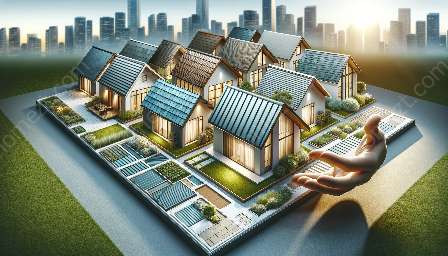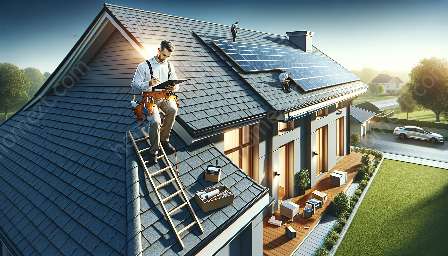Roof ventilation is an essential element in maintaining the energy efficiency and structural integrity of your home. Proper ventilation not only extends the lifespan of your roofing system but also enhances the overall comfort and air quality within your living space. In this comprehensive guide, we will explore the importance of roof ventilation, its impact on energy efficiency, and its role in home improvement.
The Science Behind Roof Ventilation
Before delving into the specifics of roof ventilation, it's crucial to understand the science behind it. The primary purpose of roof ventilation is to regulate the temperature inside the attic or roof space. During the warmer months, improperly ventilated roofs can trap heat, resulting in increased energy consumption and potential damage to roofing materials. Conversely, in colder months, inadequate ventilation can lead to moisture build-up, which may cause mold, mildew, and other structural issues.
Types of Roof Ventilation
There are various types of roof ventilation systems, each with its unique benefits and applications. Ridge vents, soffit vents, gable vents, and static vents are some of the most common options. Ridge vents, installed along the peak of the roof, allow hot air to escape while preventing moisture from entering the attic. Soffit vents are located under the eaves of the roof and facilitate air intake, ensuring proper airflow. Gable vents, situated on the exterior wall of the attic, promote air circulation. Static vents, such as roof louvers and turbine vents, rely on natural convection to exhaust hot air.
Benefits of Roof Ventilation for Energy Efficiency
Proper roof ventilation offers numerous benefits for improving energy efficiency. By maintaining a consistent and moderate temperature in the attic, ventilation helps reduce the load on air conditioning systems during hot weather. It also prevents heat from accumulating in the attic, lowering the demand for cooling. In colder climates, ventilation helps prevent condensation and ice dams, which can cause damage to the roof structure. Ultimately, efficient roof ventilation contributes to lower energy bills and a reduced environmental impact.
Enhancing Home Improvement with Roof Ventilation
When considering home improvement projects, roof ventilation should be a top priority. Improved ventilation not only extends the lifespan of roofing materials but also safeguards the overall structural integrity of the home. Adequate airflow reduces the risk of moisture-related issues and helps maintain a comfortable indoor environment. Additionally, a well-ventilated roof can contribute to the overall value and curb appeal of the property, making it an attractive feature for prospective buyers.
Conclusion
Roof ventilation plays a critical role in maintaining a healthy and energy-efficient home. It is essential for preserving the integrity of roofing materials and ensuring a comfortable living environment. By understanding the benefits of proper ventilation and the various options available, homeowners can make informed decisions to optimize their roofing systems and enhance the overall value and sustainability of their homes.





















